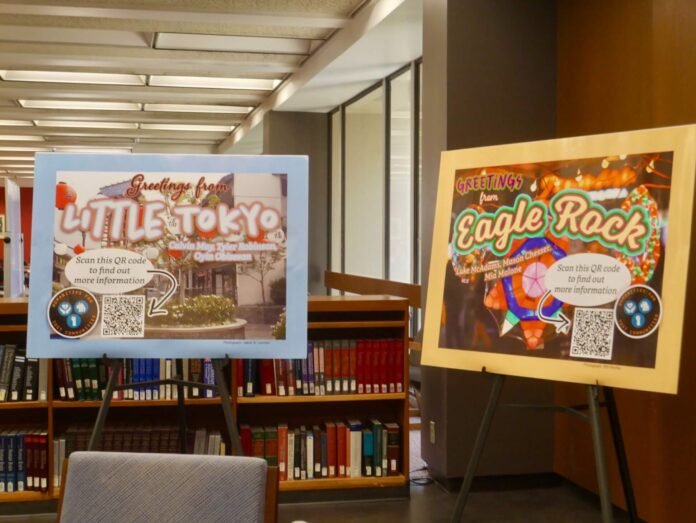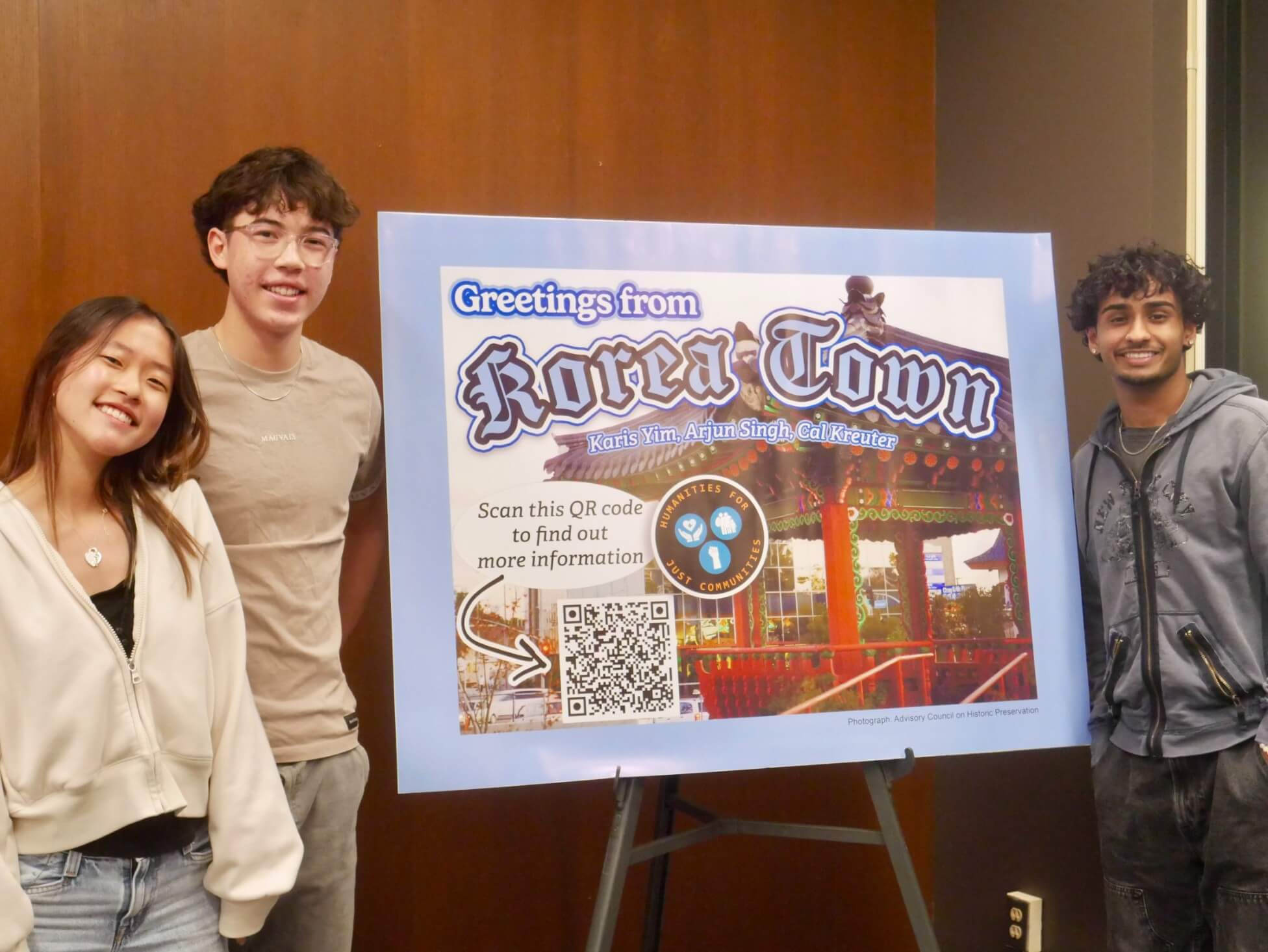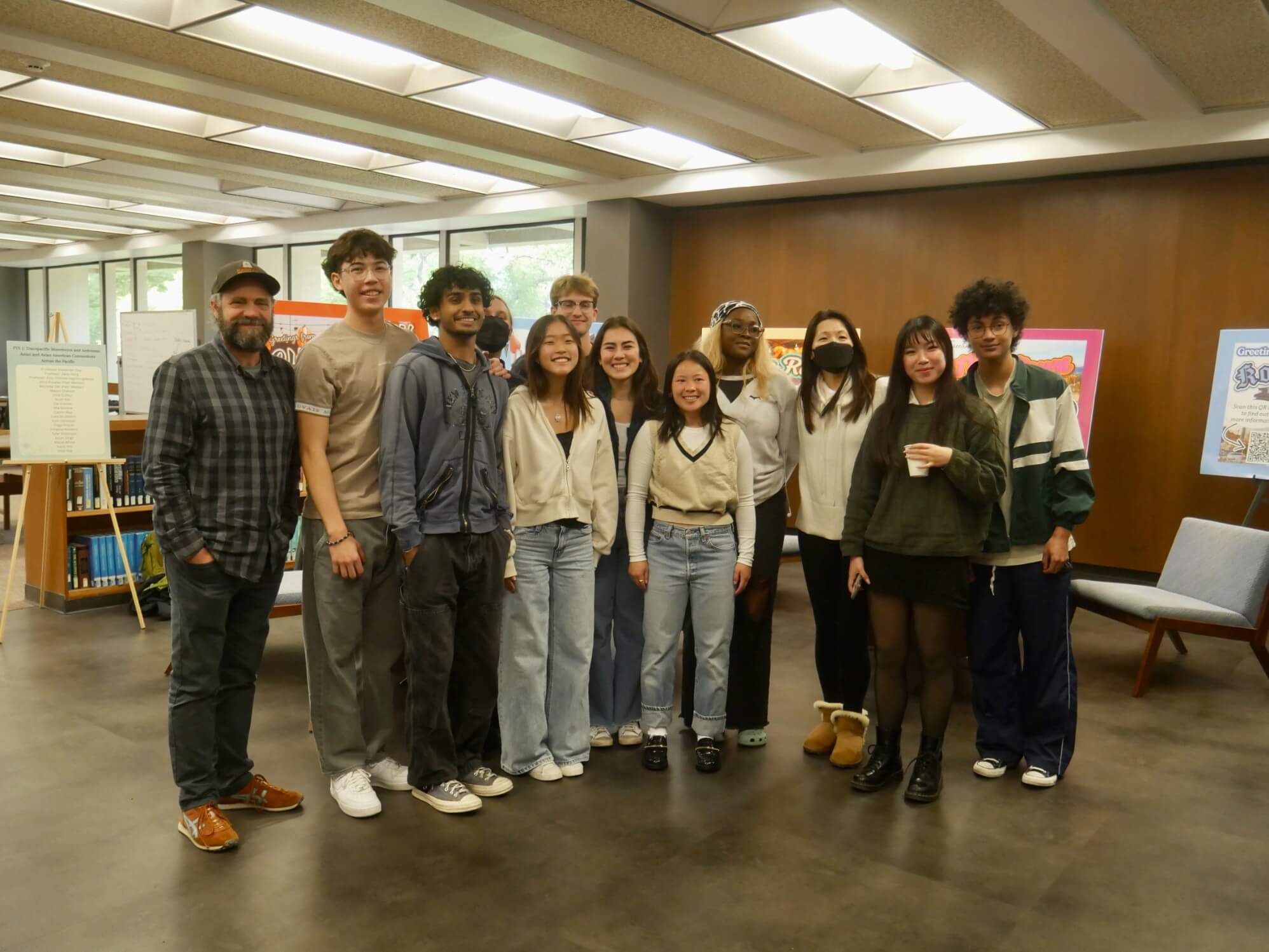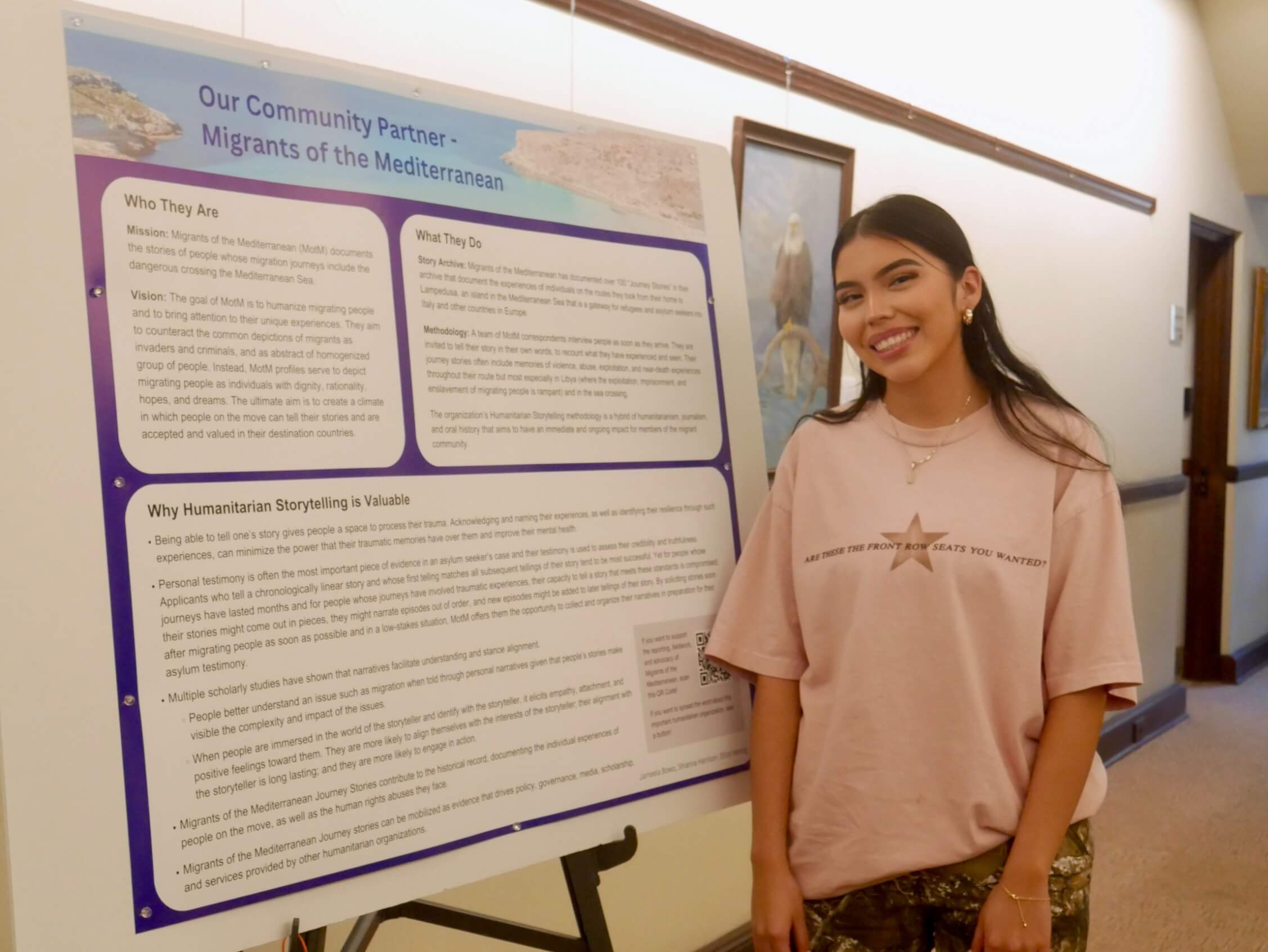
Extending throughout the first floor of the Academic Commons is the work of over 60 first-year students, in the form of visual and interactive exhibits for the 2024 Humanities for Just Communities (HJC) Spring Showcase. Within their projects, students explored this year’s theme of migration, displacement and cultural resilience.
Philosophy Professor Clair Morrissey oversees the Spring Showcase and is a co-director of the HJC.
“[The HJC is] a program to bring students into the humanities by showing them how the methods and skills that you develop in studying the humanities can be used to create just communities,” Morrissey said. “[Apply] things you care about and change the world.”
HJC is a three-year initiative funded by The Andrew W. Mellon Foundation. According to Morrissey, there are three main components to the program in the span of a year. Two occurred over the summer: in 2023, the HJC offered a free, one-credit virtual course titled Migration, Displacement and Cultural Resilience for incoming first years. Rising sophomores were given the opportunity to apply for a faculty-mentored, 10-week summer research program, the 2023 Summer Fellows Program, with the theme of health justice.
In the Fall, first-year students had the opportunity to join the HJC program through six humanities courses — three First Year Seminars (FYS), one Religious Studies course, one Media Arts & Culture (MAC) course and one course cross-listed as American Studies and Black Studies.

As a part of each course, Morrissey said students complete a hands-on, experimental and immersive social justice project. On Feb. 9 all of the students in these HJC courses got the opportunity to display and present their work in the Spring Showcase. The projects include story maps, videos, oral history and podcasts, according to Morrissey. The students’ exhibition spans across the first floor of the Academic Commons and will be available on display until Feb. 23.
Luke McAdams (first year), Mason Chesser (first year) and Mia Malone (first year) were enrolled in an HJC FYS course this past Fall semester called Transpacific Movements and Activisms: Asian and Asian American Connections Across the Pacific. The three of them collaborated on a project — a story map, titled “Eagle Rock: A Slice of Filipino Americana.”
“The assignment was really to highlight specific Asian immigrants who have come to the LA area, and their story that has led to present day and how it has changed the culture of that area and broader LA,” Malone said.

McAdams, Chesser and Malone’s story map of Eagle Rock unfolds the history of Eagle Rock, specifically regarding the implications of Filipino migration and the changing Filipino presence. They also included information on Tongva and Spanish influence in the area. According to Malone, the three students each dove into individual research and a final analysis of three locations in Eagle Rock: St. Dominic’s Catholic Church, Eagle Rock Plaza and the Philippine Village Community Center.
Malone said her academic interests currently gravitate toward the fields of STEM (Science, Technology, Engineering and Mathematics), but this HJC course opened her eyes to the humanities in unexpected ways and changed her whole perspective on Asian history. Malone said she would not have taken a history course such as this one if FYS classes were not required.
Malone’s FYS course was co-taught by History and Asian Studies Professor Alexander Day, History Professor Jane Hong and Religious Studies and Asian Studies Professor Amy Holmes-Tagchungdarpa.
“The combination of all of their knowledge brought a lot to the class,” Malone said. “It was really amazing to see how they pieced together the material for us.”
Religious Studies Professor Kristi Upson-Saia taught the course “Displaced Peoples of the Mediterranean,” another class where students’ projects were featured in the HJC Spring Showcase. Julia Larson (first year), Hannah Lieberman (first year), Ava Silverstein (first year) and Rory Webber (first year) collaborated on a visual display final project.

Titled “Crossing the Mediterranean Sea: One of the most dangerous parts of the journey,” their exhibit presents a model “lapalapa” — an inflatable raft that refugees have used to cross the Mediterranean Sea. The model lapalapa rests in front of a poster board that Webber said describes the immigrants’ experience.
“I was hoping to communicate the diverse and often harrowing experiences that migrating peoples go through to an audience that likely has little knowledge of these conditions,” Webber said via email.
The reach of these HJC courses extends to more than just historical and global facts, but also students’ values and morals — Webber said their biggest takeaway from the class was empathy, and the notion that everyone could benefit from incorporating more of it into their lives.
“I think if everyone took the time to think of migrants as individuals with unique experiences and troubles rather than statistics, the world would look a lot different,” Webber said via email.
Contact Emma Cho at echo2@oxy.edu
![]()


































